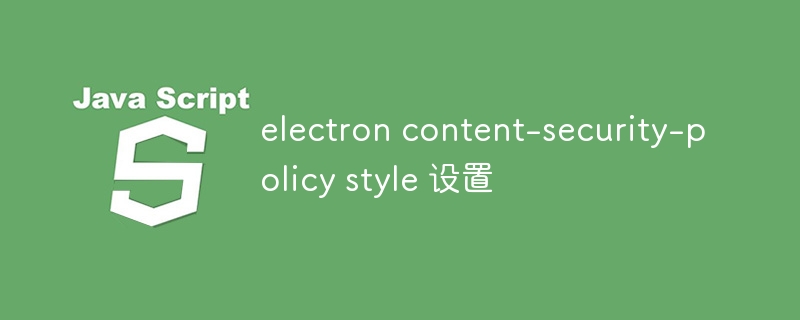
この記事では、開発者が Web テクノロジーを使用してクロスプラットフォームのデスクトップ アプリケーションを構築できるようにするアプリケーション プラットフォームである Electron のスタイルのコンテンツ セキュリティ ポリシー (CSP) の構成に焦点を当てています。この記事では、「el

Electron でスタイルの CSP を構成するには、electron を使用できます」 .session.defaultSession.webRequest.onHeadersReceived イベント。このイベントは、リクエストのヘッダーが受信されたときに生成され、サーバーに送信される前にヘッダーを変更できるようになります。electron.session.defaultSession.webRequest.onHeadersReceived event. This event is emitted when a request's headers are received, allowing you to modify the headers before they are sent to the server.
To add a CSP header to a request, you can use the setHeader method on the responseHeaders object. For example, the following code adds a CSP header to all requests:
electron.session.defaultSession.webRequest.onHeadersReceived((details, callback) => {
details.responseHeaders['Content-Security-Policy'] = 'default-src \'self\'; style-src \'self\' https://unpkg.com; img-src \'self\' https://unpkg.com https://example.com;'
callback({responseHeaders: details.responseHeaders});
});When setting up a CSP for styles in an Electron application, there are a few best practices to follow:
Electron's CSP for styles supports the following browser sources:
'self': This source represents the application's own origin.'unsafe-inline': This source allows inline styles to be executed.'unsafe-eval': This source allows inline scripts to be executed.'none'setHeader メソッドを使用できます。 responseHeaders オブジェクト。たとえば、次のコードはすべてのリクエストに CSP ヘッダーを追加します:'self': このソースはアプリケーション自身のオリジンを表します。🎜'unsafe-inline': このソースはインライン スタイルの実行を許可します。🎜'none': このソースではリソースのロードが許可されません。🎜🎜以上が電子コンテンツ セキュリティ ポリシー スタイルの設定の詳細内容です。詳細については、PHP 中国語 Web サイトの他の関連記事を参照してください。